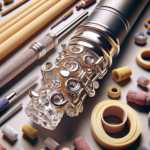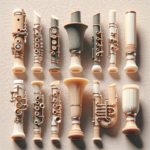Martin Freres Clarinet Acoustics: Unlocking Exceptional Sound
Have you ever wondered why some clarinets sound better than others, or how to achieve that unique tone? You're in the right place to find out. The acoustic properties of a clarinet can significantly impact your sound, and Martin Freres has been at the forefront of understanding and crafting these instruments.
The Magic of Materials
Martin Freres clarinets are made from high-quality grenadilla wood. This wood isn't just visually appealing; it produces a rich, warm sound. Its density helps control vibrations, resulting in a remarkably stable tone. The treatment and seasoning of the wood also play a crucial role in the final product.
Design: The Heart of Acoustics
The design of a clarinet significantly influences its acoustics. Martin Freres has continuously improved their bore design over the years. The bore, the inner chamber through which air travels, is vital for sound production. Models with a taper bore (which gradually narrows) offer clearer sound projection with fewer harmonics, perfect for orchestral settings. This taper allows smooth air flow, creating a pleasing tone.
| Feature | Impact on Sound |
|---|---|
| Grenadilla Wood | Rich, warm tone with stable vibrations |
| Taper Bore Design | Clear projection, fewer harmonics |
| Key Placement | Improved intonation and timbre |
The Art of Key Placement
Key placement is another factor that affects acoustics. The arrangement of tone holes can fine-tune intonation and timbre. Martin Freres instruments are carefully designed to ensure that the distances between tone holes support harmonious sound production. This attention to detail allows each note to ring true without extra effort from the player.
Mastering Playing Technique
Now, let's explore some key aspects of playing technique that relate to Martin Freres clarinet acoustics:
- Embouchure: How you shape your mouth directly impacts sound travel through your instrument. A good seal and firm mouth corners support the air stream, giving your tone more power and clarity.
- Breath Support: Consistent airflow leads to more controlled sound. Practice long tones to develop your air support. Aim for a steady air stream with the right speed and pressure.
- Dynamics Control: Martin Freres clarinets respond well to changes in airflow, allowing for expressive playing. Practice crescendos and decrescendos to understand your instrument's capabilities and improve breath control.
The Importance of Maintenance
Regular maintenance is crucial. Keeping your clarinet clean extends its life and maintains its acoustic properties. Residue on pads or in the bore can muffle sound. Always swab out your instrument and wipe down the key pads after playing. This simple routine can greatly improve how your Martin Freres clarinet sounds and feels.
Conclusion
Understanding Martin Freres clarinet acoustics can greatly enhance your playing experience. By appreciating the interplay of materials, design, and playing technique, you can take your music to new heights. Whether you're new to clarinet playing or a seasoned musician, these insights can help you get the most out of your instrument.







